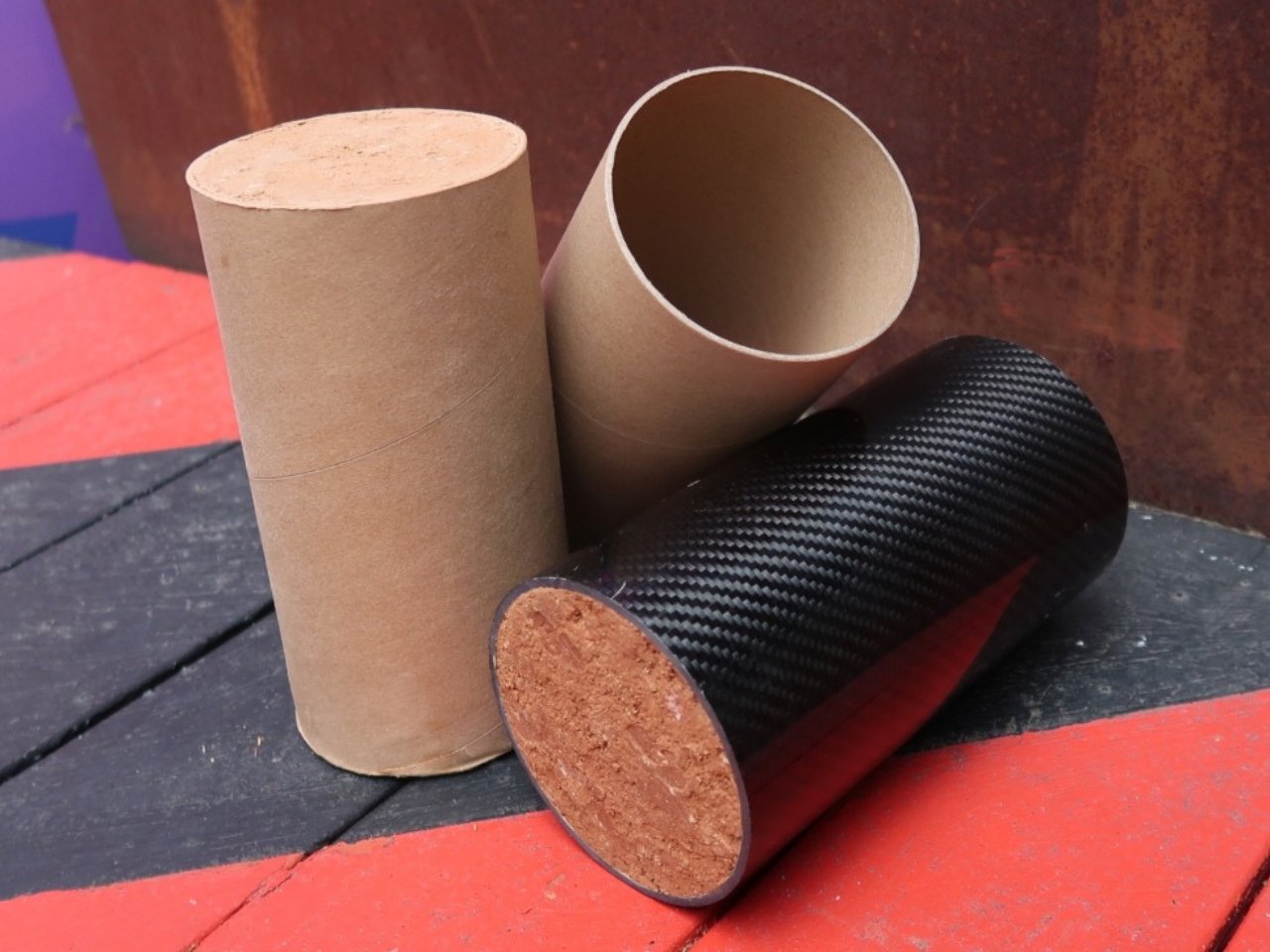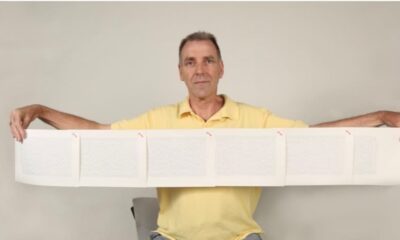Technology
Researchers Develop Sustainable Construction Material Using Cardboard

A team of researchers at RMIT University in Australia has developed a groundbreaking construction material that combines soil, water, and cardboard, presenting a sustainable alternative to conventional building methods. Known as cardboard-confined rammed earth (CCRE), this innovative approach aims to address the environmental impact of traditional construction materials, particularly concrete, which contributes approximately 8% of global carbon emissions annually.
The traditional construction industry generates significant waste, with Australia alone disposing of over 2.2 million tons of cardboard and paper in landfills each year. By utilizing cardboard tubes as permanent casings in the construction process, the RMIT team has created a method that not only repurposes waste but also reduces the reliance on environmentally damaging materials.
Revolutionizing Sustainable Building
The concept behind CCRE is elegantly simple. Instead of using typical formwork that is removed post-construction, builders employ cardboard tubes that remain in place. These tubes confine and strengthen the moistened soil compacted within, akin to a supportive sleeve that enhances the structural integrity of the core material.
Dr. Jiaming Ma, the lead researcher, highlights that while modern rammed earth construction often incorporates cement for added strength, this is unnecessary with the thick walls produced by this method. By replacing cement with cardboard, the team has achieved a material with just one quarter of the carbon footprint of concrete, and at a cost of less than one third that of traditional materials. A full-size CCRE column emits only 17.41 kilograms of carbon dioxide equivalent, compared to 77.95 kilograms for standard concrete.
The accessibility of the CCRE process is another significant advantage. Construction teams can produce the material directly on-site by compacting local soil and water mixtures inside the cardboard tubes. This approach reduces the need to transport heavy materials such as bricks and steel, making it particularly advantageous for construction in remote areas where suitable soil is readily available.
Strength and Sustainability
Concerns regarding the strength of cardboard as a structural material are addressed by the research team’s innovative formula, which predicts the material’s durability based on the cardboard’s thickness. Following a drying period of 28 days, compression tests indicate that CCRE matches the strength of conventional cement-stabilized rammed earth. While it may not rival standard concrete in strength, it is sufficiently robust for load-bearing applications in low-rise buildings.
Another notable benefit of rammed earth construction is its natural ability to regulate indoor temperature and humidity due to high thermal mass, making it well-suited for warmer climates. This characteristic can significantly reduce reliance on mechanical cooling, leading to lower energy consumption and further diminishing carbon emissions.
The RMIT team envisions CCRE as an ideal solution for low-rise housing, community structures, and off-grid projects. This method aligns with a global trend toward earth-based construction that prioritizes sustainability and local material use, driven by net-zero goals.
As the team seeks industry partners to scale up the application of CCRE, this innovation demonstrates how transforming waste into building materials can offer a greener, more cost-effective alternative to traditional construction practices. Through a fresh perspective on established techniques, they illustrate that sustainable building solutions can emerge from simple, accessible components.
-

 World3 months ago
World3 months agoScientists Unearth Ancient Antarctic Ice to Unlock Climate Secrets
-

 Entertainment3 months ago
Entertainment3 months agoTrump and McCormick to Announce $70 Billion Energy Investments
-

 Science3 months ago
Science3 months agoFour Astronauts Return to Earth After International Space Station Mission
-

 Lifestyle3 months ago
Lifestyle3 months agoTransLink Launches Food Truck Program to Boost Revenue in Vancouver
-

 Technology2 months ago
Technology2 months agoApple Notes Enhances Functionality with Markdown Support in macOS 26
-

 Top Stories7 days ago
Top Stories7 days agoUrgent Update: Fatal Crash on Highway 99 Claims Life of Pitt Meadows Man
-

 Sports3 months ago
Sports3 months agoSearch Underway for Missing Hunter Amid Hokkaido Bear Emergency
-

 Politics2 months ago
Politics2 months agoUkrainian Tennis Star Elina Svitolina Faces Death Threats Online
-

 Technology3 months ago
Technology3 months agoFrosthaven Launches Early Access on July 31, 2025
-

 Politics3 months ago
Politics3 months agoCarney Engages First Nations Leaders at Development Law Summit
-

 Entertainment3 months ago
Entertainment3 months agoCalgary Theatre Troupe Revives Magic at Winnipeg Fringe Festival
-

 Politics1 week ago
Politics1 week agoShutdown Reflects Democratic Struggles Amid Economic Concerns

















